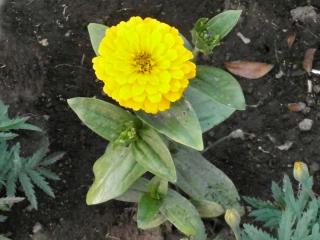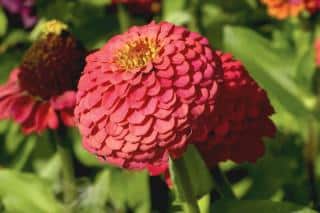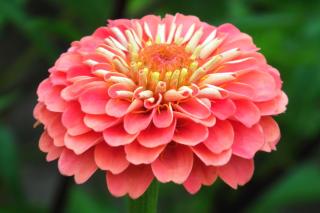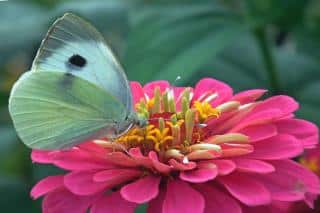

Zinnia is a cute annual flower that blooms abundantly all summer long.
Zoom in on Zinnia facts
Name – Zinnia elegans
Family – Asteraceae
Type – annual
Height – 12-28 inches (30-70 cm)
Exposure: full sun – Soil: rich, well drained – Flowering: summer → early fall
Favored for its many colors, it is great for flower beds, garden boxes and pots.
Whether in a flower bed in your garden or to decorate a pot or garden box, zinnia is to be sown in spring, actually starting indoors if the climate is too cold to start it.
The zinnia flower fears the cold and must be sown in a sheltered place if temperatures don’t yet exceed 65°F (18°C).
It’s perfectly possible for you to collect Zinnia seeds from wilted flowers and store them over the winter in a paper envelope kept away from moisture. That way you can sow them in the following year.
After having prepared your seedlings in nursery pots, or if ever you’ve purchased ready-grown zinnia plants in a horticulture store, wait for mid-May before transplanting them to the ground.
 Zinnia loves full sun and deserves the warmest spot of your garden.
Zinnia loves full sun and deserves the warmest spot of your garden.Zinnia is very easy to care for, but a few rules are applicable to maximize its beautiful blooming.
Zinnia will die if it freezes and must be pulled out and thrown to the compost after the first frost spells.
Before that, though, shake the seeds off the plants to let them fall to the ground, and cover them with a layer of dead leaves. It’s more than probable that they’ll self-sow every year.
 Regular watering in case of high temperatures or prolonged dry spells.
Regular watering in case of high temperatures or prolonged dry spells.
It grows quite bushy and is perfect for flower beds. It will decorate your edges and beds just as well as it will enhance your garden boxes, pot arrangements and containers.
There are a great many varieties, some tall, some dwarfish, and the most common one is Zinnia elegans.

Cut wilting flowers off as they die off, and you’ll always have the zinnia on its best for show!